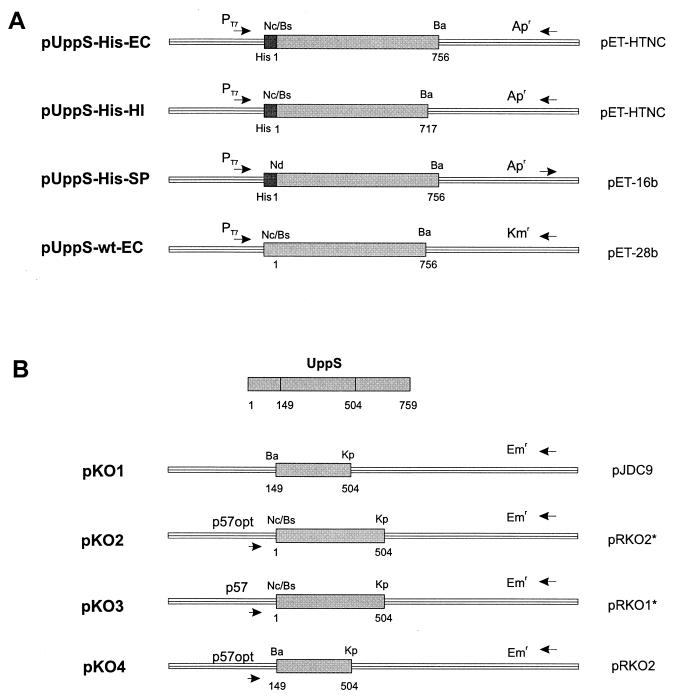FIG. 1.
Plasmids used in this study. (A) Schematic representation of plasmids for expression of uppS genes from E. coli, H. influenzae, or S. pneumoniae as His-tag fusion protein and from E. coli uppS as untagged protein under the control of the T7 promoter. (B) Schematic representation of plasmids for generating pneumococcal mutants. For disrupting uppS and terminating expression of the downstream genes in the operon, a small internal fragment of the uppS gene was cloned into pJDC9, resulting in pKO1. To place the uppS operon under the control of the two tetracycline-regulatable promoters, p57opt and p57, an amino-terminal fragment of the uppS gene was cloned in the promoter vectors pRKO2* and pRKO1*, resulting in plasmids pKO2 and pKO3, respectively. To generate a disruption of the uppS gene while placing downstream genes under the control of the tetracycline-regulatable promoter p57opt, an internal fragment of uppS was cloned into the promoter vector pRKO2, resulting in plasmid pKO4. For details, see Materials and Methods. Numbers indicate nucleotides, staring with 1 at the putative initiation codon of each gene. Abbreviations for restriction enzymes: Ba, BamHI; Bs, BsaI; Kp, KpnI; Nc, NcoI; Nd, NdeI.

